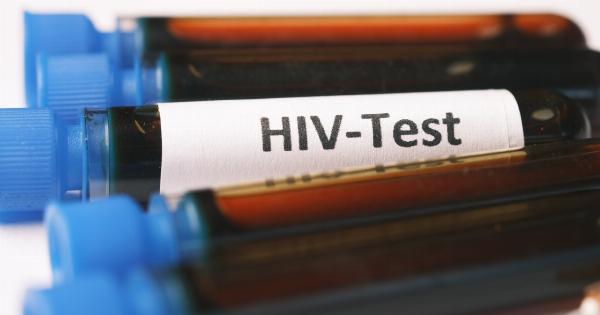Human Immunodeficiency Virus (HIV) and Acquired Immunodeficiency Syndrome (AIDS) are two closely related diseases that have had a significant impact on global health and society.
HIV is the virus that causes AIDS, and understanding the basics of these conditions is crucial for prevention, diagnosis, and treatment. In this article, we will explore the ABCs of HIV and AIDS, starting from their definitions and then delving into various aspects related to these diseases.
What is HIV?
HIV is a lentivirus, a type of virus that attacks the immune system. The virus primarily targets CD4 cells, also known as T cells, which play a vital role in coordinating the body’s immune response.
By attacking and destroying CD4 cells, HIV weakens the immune system, making it harder for the body to fight off infections and diseases.
Transmission of HIV
HIV can be transmitted through various routes, including:.
- Unprotected sexual intercourse: HIV can be transmitted through vaginal, anal, or oral sex without the use of condoms.
- Sharing needles: HIV can be spread by sharing needles or other equipment for injecting drugs.
- From mother to child: HIV can be passed from an infected mother to her baby during childbirth, breastfeeding, or pregnancy.
- Blood transfusion: Although rare nowadays due to strict screening methods, HIV can be transmitted through infected blood transfusions.
Stages of HIV Infection
HIV infection progresses through different stages:.
Stage 1: Acute HIV Infection
This is the initial stage of infection, which occurs within 2-4 weeks after exposure to the virus. Symptoms may resemble flu-like illness, including fever, sore throat, swollen glands, and body rash.
During this phase, the virus replicates rapidly, and high viral loads are present in the blood.
Stage 2: Clinical Latency (Chronic HIV)
This stage is often referred to as chronic HIV infection or clinical latency. During this period, the virus continues to replicate but at a lower rate.
People with chronic HIV may not experience any significant symptoms for a prolonged period, ranging from a few years to even decades.
Stage 3: Acquired Immunodeficiency Syndrome (AIDS)
AIDS is the most advanced stage of HIV infection. It is characterized by a severely damaged immune system, leaving individuals susceptible to severe opportunistic infections and certain types of cancer.
AIDS is diagnosed when the CD4 cell count falls below a certain level or when specific opportunistic infections occur.
Symptoms of HIV and AIDS
The symptoms of HIV and AIDS can vary depending on the stage of infection. In the early stages, symptoms may resemble those of the flu, such as fever, fatigue, swollen lymph nodes, and sore throat.
As the infection progresses to AIDS, more severe symptoms may occur, including:.
- Persistent fever
- Night sweats
- Rapid weight loss
- Chronic diarrhea
- Soaking sweats at night
- Extreme and unexplained fatigue
It is important to note that the presence of these symptoms does not necessarily mean a person has HIV/AIDS, as many other conditions can cause similar signs. Testing is crucial for a proper diagnosis.
Diagnosing HIV
HIV can be diagnosed through blood tests that detect antibodies or antigens related to the virus. Common diagnostic tests include:.
- HIV Antibody Test: This test detects antibodies produced by the immune system in response to HIV infection. It may take a few weeks to a few months for antibodies to be detectable.
- HIV Antigen Test: This test detects HIV antigens, which are proteins produced by the virus. Antigen tests are usually combined with antibody tests to increase accuracy.
- CD4 Cell Count: A CD4 cell count measures the number of CD4 cells in a blood sample, indicating the status of a person’s immune system.
- Viral Load Test: This test quantifies the amount of HIV RNA in the bloodstream, providing information about the viral replication rate.
Treatment and Prevention
While there is no cure for HIV/AIDS, the disease can be effectively managed with antiretroviral therapy (ART).
ART involves taking a combination of medications that suppress the virus’s replication, helping to preserve the immune system and preventing the progression to AIDS. Additionally, preventive measures play a crucial role in stopping the spread of HIV:.
- Practicing safe sex: Using condoms during sexual intercourse reduces the risk of HIV transmission.
- Using clean needles: Avoid sharing needles or other drug paraphernalia to prevent HIV transmission.
- Pre-exposure prophylaxis (PrEP): Individuals at high risk of contracting HIV can take medication regularly to reduce the chances of infection.
- Early diagnosis and treatment: Getting tested for HIV and starting treatment early significantly improves health outcomes and prevents transmission to others.
Overcoming Stigma and Discrimination
One of the major challenges faced by individuals living with HIV/AIDS is stigma and discrimination. HIV-related stigma often stems from fear, ignorance, and misinformation. It can lead to social exclusion, denial of healthcare, and psychological distress.
Combatting stigma involves education, raising awareness, emphasizing empathy, and promoting inclusivity.
The Road Ahead
Although significant progress has been made in combating HIV and AIDS, the battle is far from over. Ongoing research aims to develop an HIV vaccine, improve treatment options, and find a cure.
As a global community, we must work together to ensure widespread access to prevention, testing, and treatment resources, ultimately aiming to eradicate HIV/AIDS and create a world free from this devastating disease.






























